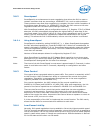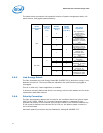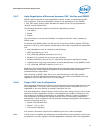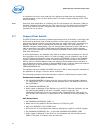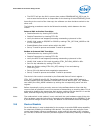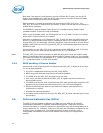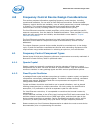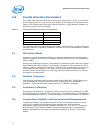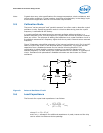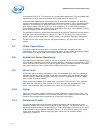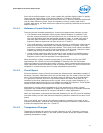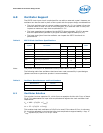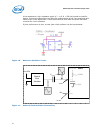
31
82575 Ethernet Controller Design Guide
4.1.3 Programmable Crystal Oscillators
A programmable oscillator can be configured to operate at many frequencies. The
device contains a crystal frequency reference and a phase lock loop (PLL) clock
generator. The frequency multipliers and divisors are controlled by programmable
fuses.
A programmable oscillator’s accuracy depends heavily on the Ethernet device’s
differential transmit lines. The Physical Layer (PHY) uses the clock input from the
device to drive a differential Manchester (for 10 Mbps operation), an MLT-3 (for 100
Mbps operation) or a PAM-5 (for 1000 Mbps operation) encoded analog signal across
the twisted pair cable. These signals are referred to as self-clocking, which means the
clock must be recovered at the receiving link partner. Clock recovery is performed with
another PLL that locks onto the signal at the other end.
PLLs are prone to exhibit frequency jitter. The transmitted signal can also have
considerable jitter even with the programmable oscillator working within its specified
frequency tolerance. PLLs must be designed carefully to lock onto signals over a
reasonable frequency range. If the transmitted signal has high jitter and the receiver’s
PLL loses its lock, then bit errors or link loss can occur.
PHY devices are deployed for many different communication applications. Some PHYs
contain PLLs with marginal lock range and cannot tolerate the jitter inherent in data
transmission clocked with a programmable oscillator. The American National Standards
Institute (ANSI) X3.263-1995 standard test method for transmit jitter is not stringent
enough to predict PLL-to-PLL lock failures, therefore, the use of programmable
oscillators is generally not recommended.
4.1.4 Ceramic Resonator
Similar to a quartz crystal, a ceramic resonator is a piezoelectric device. A ceramic
resonator typically carries a frequency tolerance of ±0.5%, – inadequate for use with
Intel Ethernet controllers, and therefore, should not be utilized.



